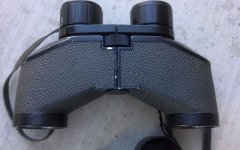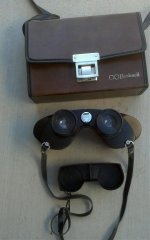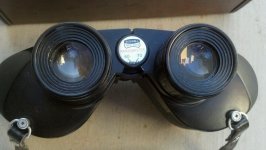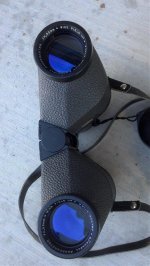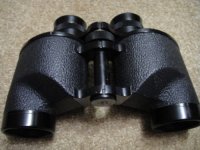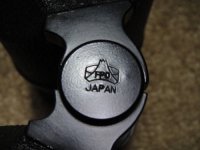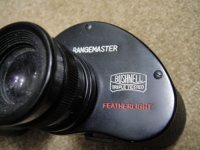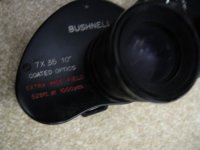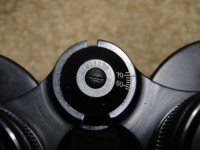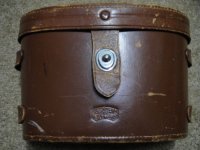Steve C
Well-known member
There was a thread here recently here, “Do better binoculars make you a better birder?” That started me thinking about the premise. I went and dug out my original binocular, a Swift Nighthawk #771, 8x, 40 with a 499’ fov. This was the binocular I learned how to bird with, and was my main binocular for many years, supplemented occasionally by a Swift # 810 Trylite 8x, 40 roof. I got it in 1969 and retired it from wear and tear in about 2000, and sent it to Nicholas Crista for repair in 2007. In the time I used it, it never let me down and I never thought about needing an upgrade. I finally decided I needed something when the Nighthawk was put on the shelf. That led to a Leupold 9x, 35 IF Gold Ring porro to a Nikon Monarch ATB, and started me into my optics hobby.
I wondered how much improvement have we really seen in binoculars. Have the new modern roofs with all the ED glass, several generations new phase coatings, dielectric prism mirrors, flat fields, top end multi-coatings, and all the rest of the bells and whistles really made such an improvement we can’t ID today’s birds with yesterday’s glass? Did that relegate yesteryear’s birders to second class status? I decided to put my new modern marvel roofs aside and see what I felt I lost with the porros of yesteryear.
Along the path of my hobby, I procured a few very decent vintage porros. So what I’m going to do here is do some reviews of some of my vintage (in my estimation anyway) totally bird worthy older binoculars. Feel free to disagree.
One thing becomes apparent. If you need lots of eye relief, vintage glass may not work very well, in particular some of the very wide angle models. These aren’t sealed very well, so waterproof they are not, but my Swift never fogged on me in all the times I used it.
I originally thought the Nighthawk was the place to start this. But then I got a couple of serious eye openers. So good, I have to start there.
Enter the Bushnell Rangemaster 7x, 35. BF member John Dracon has posted some thoughts on these. Additionally there are a few posts on Cloudy Nights, but not much information on these absolute optical gems is available.
Here is a link to John’s thread. http://www.birdforum.net/showthread.php?t=230405
I had seen these when searching for other vintage porros, and was curious about them, but John’s thread got me thinking maybe they were worth a hard look. John was also pretty much responsible for my vintage porro collection, his comments leading me to a Canon 7x35, and somehow one thing led to another. The first Rangemaster I became aware of was the later Tamron slope shoulder model. This is a sort of sci-fi looking binocular. Most of the strange appearance is due to the fact the prism placement is upside down from the typical porro. Here the surface of the frame is flat across the top from the hinge and then curves around underneath the binocular to the bottom of the hinge. This imparts sort of a pot-bellied look. Another difference in appearance found here is the slope of the prism plate, giving the binocular a sort of bat wing look.
I started looking at sites for one that looked right. The sellers raved about how good they were (no surprise I suppose), and there was the realization that maybe these were pretty good, because they all went (mostly) in the $275-350 range which was a little steep for me when I was looking. However that changed recently, I don’t know why, but I’m not arguing with good fortune. A fellow posted one on the bay for an astonishing buy it now price of $600. He got no takers. He reposted it and none of the bids met his reserve. At this time two other Tamron Rangemasters surfaced. The one I got started at $57. I got it delivered to my door for $128.50. I am now kicking myself for not going in on the other one, as it sold for $101.50.
The original Rangemaster appeared in 1950 and was made for Bushnell by Fuji Photo Optical. It took me awhile to figure this out, as I thought the Tamron model was the Rangemaster. Bushnell ads for 1957 offer these (with the silver trim) for $125.00. This was a traditional B&L one piece body with flat outer prism plates and a wide 10* fov. They were offered in both Individual and center focus models. There was at least one later derivation of the original (the one with the silver trim), which John details in the thread I linked. The Tamron has an 11* fov. In an interview David Bushnell (links will be in another post), he says that quantity of the orders was perhaps a problem with Fuji, which is why Tamron made the last of the line. He sold his company in 1972. I have no idea when the change was made from the Fuji Rangemaster to the Tamron. It is possible the new management could not, or perhaps did not want to continue with Fuji and at some point switched to Tamron. Maybe Bushnell thought the Tamron style was the wave of the future and Fuji balked. When the first Tamron Rangemaster appeared, I have yet to learn, but it seems likely it was after the sale. David Bushnell stated he never specified any design parameters for the Rangemaster. He just told Fuji to make him the best binocular they could make and he’d buy it. The Tamron model is a different binocular design from the Fuji. If the posts on Cloudy Nights are correct, the last Rangemaster was in Bushnell’s catalog in 1980 for $450.00.
The Tamron Rangemaster
I’ll start with this one since I have had it for a while and the Fuji model has not reached me yet. I will approach this in several parts, first with the Tamron model, then the Fuji Model. I will follow with adequate illustrative pictures when I have both on hand. I will post another with regard to construction and disassembly, and add a comparison and conclusion.
Some may have the idea that something like a 7x, 35 might be somewhat mid-sized. That would be an erroneous assumption. That surprised me at first. I thought they were probably on the lines of the Bushnell Custom size wise. Photos I have seen do not adequately convey the dimension of this huge binocular. Sans accessories, they scale 38 oz., vs. 24 oz. for the legitimate mid-size Bushnell Custom. With some trimming, Bushwhacker # 6 flip up objective covers work well, and a rain guard from a Kruger Caldera (fits and works a lot better than the original), and a small neck strap the weight goes to 40 oz.
The serial number is H414479. J-B 45 (Tamron) for the finished product and J-E 47 (Tokuhiro Koki Seisakusho) for the body. I wonder if the last two digits of the serial number correspond to year of manufacture.
They are no longer than most 7x, 35 binoculars, but are a lot wider, and much deeper bodied and massive. The objectives open to 8 inches (outside to outside) at maximum spread. Objective center to center at the wide point is 146 mm. IPD range is 57-73 mm. The objective center to center distance remains a bit over twice the IPD throughout the range of adjustment. The outer objective diameter is 52 mm. My hands span 9” when spread. With my finger on the focus wheel, my thumb just barely hits the bottom curve of the prism housing. From top of the housing at the hinge, around to the bottom of the housing at the hinge they go 10”. At my 62 mm IPD they are 5.25 inches high, 7.5 inches wide, and 3 inches deep, and the objective center to center is 136 mm. The oculars are sized with the rest of the glass. The eye piece is 45 mm (1.8”) in diameter. The ocular lenses are about an inch in diameter (25 mm). They are supported by a massive, flex free, two piece bridge. The focus wheel is small for the size of the binocular but has the best focus movement of any vintage porro I have. Focus is clockwise to infinity, the movement is smooth and precise without play. Focus moves easily at 0* F. Close focus is about 12 feet. That can be adjusted down to about eight feet, but with some loss of sharpness at infinity. More in another post.
I wondered if the huge housing was to house big prisms, or if it was some sort of new wave, new era disco design feature. It may well relate to the 1970’s disco era fashion, but the prisms are larger than any other 7x, 35 I have. In fact, they appear to be identical in dimension, and weight to the prisms of my Swift Audubon 8.5x, 44 Type IIc, which weigh 45 oz. The size of the housings on the Rangemaster and the Audubon have about equal outer measurements, if different form. It looks like the prism assembly (or at least the prisms) from one could transfer from the other, but I have not tried that. The round exit pupils speak of a Bak-4 ancestry. I think it likely this upside down housing design was a short lived effort to redesign the appearance of the porro. There are a few other upside down prism porros. Those that come to mind are the Bushnell Custom, the Jason Venture 4000, and some of the Sears Discoverer design. These seem to have died with the passing of JTTI. Too bad, because porro design may have been on the edge of a breakthrough, but roof development seems to have doomed that idea.
I was not really prepared for the image that greeted my eyes. For a single coated, 35 year old binocular whose last catalog appearance was 1980, the view is astounding. Like I have posted about the Audubon IIc, I could be satisfied if these gave me my last magnified view of this life. Like the Audubon, it would be a contest with any modern alpha, based on image quality. It will concede nothing without a serious argument. No, I am not saying these are quite alpha good, but anyone of retaining any objectivity will realize how good these are. They were certainly in the top tier, best you could get in their day. They are as good today as then. The single coating is a bluish tint, but viewing a white sheet of paper through the objective shows a very slight amber bias. Viewing the image, the color rendition appears neutral to perhaps slightly cool. Just like walking closer to your target. For the stunning wide field, the edges are remarkably good. I’d put the sweet spot a 75% of the field with a reasonably gradual drop off to the edge. The field is 11* (578’), so that is a pretty big sweet spot, some 8* (more or less). The rest is far enough from the center axis, it just fades into your peripheral vision. You will be attracted by movement, just as we are in our unmagnified vision.
Eye relief is pretty short, there is only 5 mm with eye cups screwed in. The eye cups really don’t screw out, but there is a threaded insert that screws into the ocular assembly that when removed, will get your glasses a couple of millimeters closer. When taken out, there is a large empty space around the ocular. This can be filled with a rubber sink washer around the outer perimeter, which will protect the threads, and a 0-ring interior to that around the lens assembly. While I can see more field with the inserts removed, I see a decrease in center sharpness and frankly my eye ball is too annoyingly close to the lens. The fov is something I can pretty well see all of anyway. So I leave it in it as issued state. These removable inserts seem like the only place where quality falls off, they are very lightly threaded, and don’t lock into place until they are screwed down. The overall construction is equal to the size, they are both robust.
Apparent sharpness is excellent, with just enough contrast to match the resolution. The picture window view is wide, pleasant, stress free, and easy on the eyes. The binocular is a double handful, but I like the way it feels, and it holds extremely well. Smaller hands than mine may well balk. Nothing in this image will prevent any user who can use the short eye relief from getting any sort of detail they need, to either make an ID, or to just enjoy the view.
Yeah, some will think these are ugly. “Big, potbellied, bat wing binoculars…you’re kidding…right?”
Other parts to follow, starting with a similar discourse on the Fuji when I get it.
I wondered how much improvement have we really seen in binoculars. Have the new modern roofs with all the ED glass, several generations new phase coatings, dielectric prism mirrors, flat fields, top end multi-coatings, and all the rest of the bells and whistles really made such an improvement we can’t ID today’s birds with yesterday’s glass? Did that relegate yesteryear’s birders to second class status? I decided to put my new modern marvel roofs aside and see what I felt I lost with the porros of yesteryear.
Along the path of my hobby, I procured a few very decent vintage porros. So what I’m going to do here is do some reviews of some of my vintage (in my estimation anyway) totally bird worthy older binoculars. Feel free to disagree.
One thing becomes apparent. If you need lots of eye relief, vintage glass may not work very well, in particular some of the very wide angle models. These aren’t sealed very well, so waterproof they are not, but my Swift never fogged on me in all the times I used it.
I originally thought the Nighthawk was the place to start this. But then I got a couple of serious eye openers. So good, I have to start there.
Enter the Bushnell Rangemaster 7x, 35. BF member John Dracon has posted some thoughts on these. Additionally there are a few posts on Cloudy Nights, but not much information on these absolute optical gems is available.
Here is a link to John’s thread. http://www.birdforum.net/showthread.php?t=230405
I had seen these when searching for other vintage porros, and was curious about them, but John’s thread got me thinking maybe they were worth a hard look. John was also pretty much responsible for my vintage porro collection, his comments leading me to a Canon 7x35, and somehow one thing led to another. The first Rangemaster I became aware of was the later Tamron slope shoulder model. This is a sort of sci-fi looking binocular. Most of the strange appearance is due to the fact the prism placement is upside down from the typical porro. Here the surface of the frame is flat across the top from the hinge and then curves around underneath the binocular to the bottom of the hinge. This imparts sort of a pot-bellied look. Another difference in appearance found here is the slope of the prism plate, giving the binocular a sort of bat wing look.
I started looking at sites for one that looked right. The sellers raved about how good they were (no surprise I suppose), and there was the realization that maybe these were pretty good, because they all went (mostly) in the $275-350 range which was a little steep for me when I was looking. However that changed recently, I don’t know why, but I’m not arguing with good fortune. A fellow posted one on the bay for an astonishing buy it now price of $600. He got no takers. He reposted it and none of the bids met his reserve. At this time two other Tamron Rangemasters surfaced. The one I got started at $57. I got it delivered to my door for $128.50. I am now kicking myself for not going in on the other one, as it sold for $101.50.
The original Rangemaster appeared in 1950 and was made for Bushnell by Fuji Photo Optical. It took me awhile to figure this out, as I thought the Tamron model was the Rangemaster. Bushnell ads for 1957 offer these (with the silver trim) for $125.00. This was a traditional B&L one piece body with flat outer prism plates and a wide 10* fov. They were offered in both Individual and center focus models. There was at least one later derivation of the original (the one with the silver trim), which John details in the thread I linked. The Tamron has an 11* fov. In an interview David Bushnell (links will be in another post), he says that quantity of the orders was perhaps a problem with Fuji, which is why Tamron made the last of the line. He sold his company in 1972. I have no idea when the change was made from the Fuji Rangemaster to the Tamron. It is possible the new management could not, or perhaps did not want to continue with Fuji and at some point switched to Tamron. Maybe Bushnell thought the Tamron style was the wave of the future and Fuji balked. When the first Tamron Rangemaster appeared, I have yet to learn, but it seems likely it was after the sale. David Bushnell stated he never specified any design parameters for the Rangemaster. He just told Fuji to make him the best binocular they could make and he’d buy it. The Tamron model is a different binocular design from the Fuji. If the posts on Cloudy Nights are correct, the last Rangemaster was in Bushnell’s catalog in 1980 for $450.00.
The Tamron Rangemaster
I’ll start with this one since I have had it for a while and the Fuji model has not reached me yet. I will approach this in several parts, first with the Tamron model, then the Fuji Model. I will follow with adequate illustrative pictures when I have both on hand. I will post another with regard to construction and disassembly, and add a comparison and conclusion.
Some may have the idea that something like a 7x, 35 might be somewhat mid-sized. That would be an erroneous assumption. That surprised me at first. I thought they were probably on the lines of the Bushnell Custom size wise. Photos I have seen do not adequately convey the dimension of this huge binocular. Sans accessories, they scale 38 oz., vs. 24 oz. for the legitimate mid-size Bushnell Custom. With some trimming, Bushwhacker # 6 flip up objective covers work well, and a rain guard from a Kruger Caldera (fits and works a lot better than the original), and a small neck strap the weight goes to 40 oz.
The serial number is H414479. J-B 45 (Tamron) for the finished product and J-E 47 (Tokuhiro Koki Seisakusho) for the body. I wonder if the last two digits of the serial number correspond to year of manufacture.
They are no longer than most 7x, 35 binoculars, but are a lot wider, and much deeper bodied and massive. The objectives open to 8 inches (outside to outside) at maximum spread. Objective center to center at the wide point is 146 mm. IPD range is 57-73 mm. The objective center to center distance remains a bit over twice the IPD throughout the range of adjustment. The outer objective diameter is 52 mm. My hands span 9” when spread. With my finger on the focus wheel, my thumb just barely hits the bottom curve of the prism housing. From top of the housing at the hinge, around to the bottom of the housing at the hinge they go 10”. At my 62 mm IPD they are 5.25 inches high, 7.5 inches wide, and 3 inches deep, and the objective center to center is 136 mm. The oculars are sized with the rest of the glass. The eye piece is 45 mm (1.8”) in diameter. The ocular lenses are about an inch in diameter (25 mm). They are supported by a massive, flex free, two piece bridge. The focus wheel is small for the size of the binocular but has the best focus movement of any vintage porro I have. Focus is clockwise to infinity, the movement is smooth and precise without play. Focus moves easily at 0* F. Close focus is about 12 feet. That can be adjusted down to about eight feet, but with some loss of sharpness at infinity. More in another post.
I wondered if the huge housing was to house big prisms, or if it was some sort of new wave, new era disco design feature. It may well relate to the 1970’s disco era fashion, but the prisms are larger than any other 7x, 35 I have. In fact, they appear to be identical in dimension, and weight to the prisms of my Swift Audubon 8.5x, 44 Type IIc, which weigh 45 oz. The size of the housings on the Rangemaster and the Audubon have about equal outer measurements, if different form. It looks like the prism assembly (or at least the prisms) from one could transfer from the other, but I have not tried that. The round exit pupils speak of a Bak-4 ancestry. I think it likely this upside down housing design was a short lived effort to redesign the appearance of the porro. There are a few other upside down prism porros. Those that come to mind are the Bushnell Custom, the Jason Venture 4000, and some of the Sears Discoverer design. These seem to have died with the passing of JTTI. Too bad, because porro design may have been on the edge of a breakthrough, but roof development seems to have doomed that idea.
I was not really prepared for the image that greeted my eyes. For a single coated, 35 year old binocular whose last catalog appearance was 1980, the view is astounding. Like I have posted about the Audubon IIc, I could be satisfied if these gave me my last magnified view of this life. Like the Audubon, it would be a contest with any modern alpha, based on image quality. It will concede nothing without a serious argument. No, I am not saying these are quite alpha good, but anyone of retaining any objectivity will realize how good these are. They were certainly in the top tier, best you could get in their day. They are as good today as then. The single coating is a bluish tint, but viewing a white sheet of paper through the objective shows a very slight amber bias. Viewing the image, the color rendition appears neutral to perhaps slightly cool. Just like walking closer to your target. For the stunning wide field, the edges are remarkably good. I’d put the sweet spot a 75% of the field with a reasonably gradual drop off to the edge. The field is 11* (578’), so that is a pretty big sweet spot, some 8* (more or less). The rest is far enough from the center axis, it just fades into your peripheral vision. You will be attracted by movement, just as we are in our unmagnified vision.
Eye relief is pretty short, there is only 5 mm with eye cups screwed in. The eye cups really don’t screw out, but there is a threaded insert that screws into the ocular assembly that when removed, will get your glasses a couple of millimeters closer. When taken out, there is a large empty space around the ocular. This can be filled with a rubber sink washer around the outer perimeter, which will protect the threads, and a 0-ring interior to that around the lens assembly. While I can see more field with the inserts removed, I see a decrease in center sharpness and frankly my eye ball is too annoyingly close to the lens. The fov is something I can pretty well see all of anyway. So I leave it in it as issued state. These removable inserts seem like the only place where quality falls off, they are very lightly threaded, and don’t lock into place until they are screwed down. The overall construction is equal to the size, they are both robust.
Apparent sharpness is excellent, with just enough contrast to match the resolution. The picture window view is wide, pleasant, stress free, and easy on the eyes. The binocular is a double handful, but I like the way it feels, and it holds extremely well. Smaller hands than mine may well balk. Nothing in this image will prevent any user who can use the short eye relief from getting any sort of detail they need, to either make an ID, or to just enjoy the view.
Yeah, some will think these are ugly. “Big, potbellied, bat wing binoculars…you’re kidding…right?”
Other parts to follow, starting with a similar discourse on the Fuji when I get it.
Attachments
Last edited:




